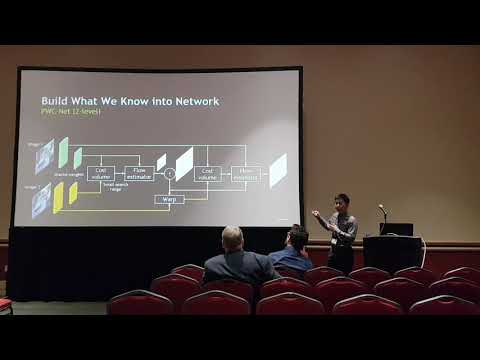Description:
Explore the PWC-Net (Pyramid, Warping, and Cost Volume Network) for optical flow estimation in this 22-minute conference talk from ROB 2018. Delve into the balance between accuracy, speed, and model size while examining key principles such as brightness constancy and pyramidal processing. Learn how the network incorporates cost volume computation, warping between pyramidal levels, and other essential components to improve performance. Analyze the effects of each principle, compare cost volume to feature-based approaches, and understand the importance of warping. Investigate closely related work, runtime considerations, and crucial implementation details. Discover insights from the Robust Optical Flow Challenge, identifying factors that contribute to robustness and examining challenging cases. Conclude with a discussion on the limitations of PWC-Net and potential areas for improvement in optical flow estimation.

Deqing Sun- PWC Net- CNNs for Optical Flow Using Pyramid, Warping, and Cost Volume
Add to list